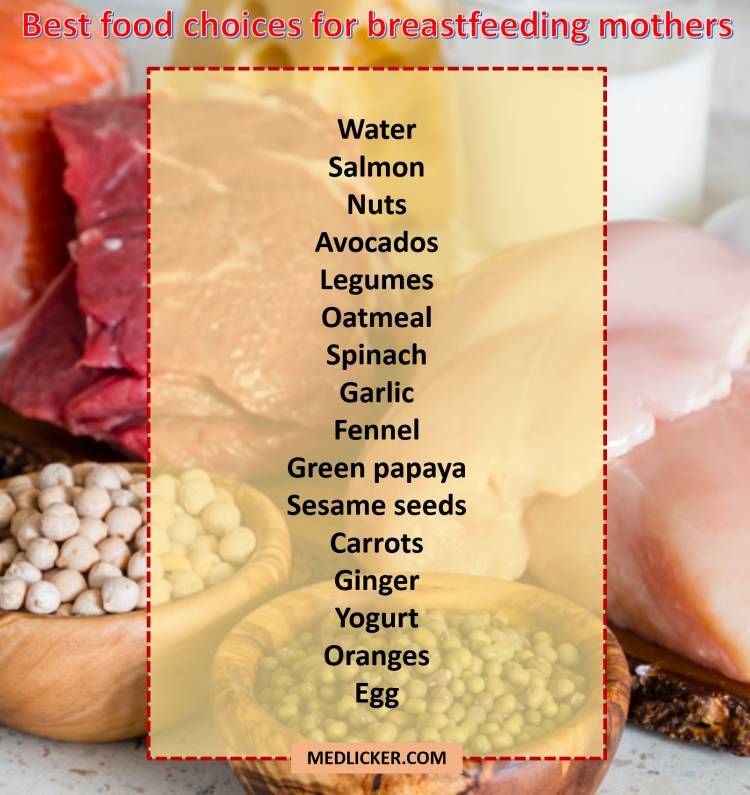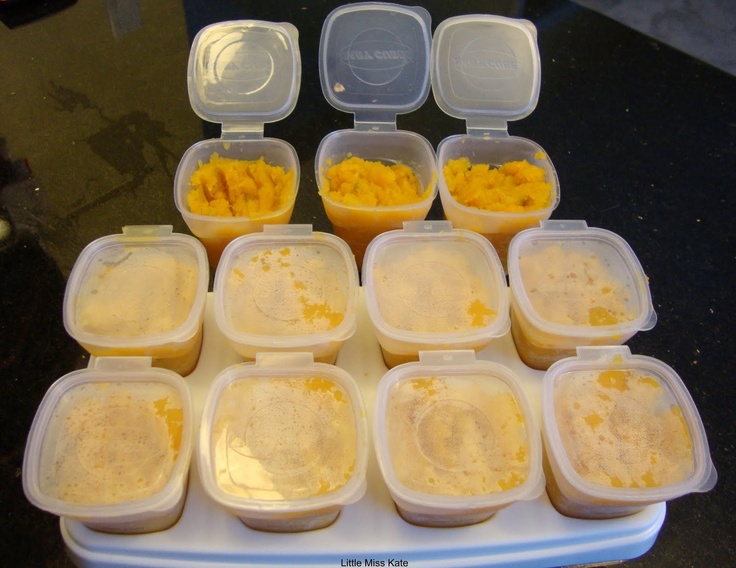Baby won t eat chunky food
What to do if your baby doesn't like baby foods, purees, or solids
Introducing your baby to solid foods can be fun and photo-worthy, but this milestone can also come with some challenges.
It's normal for babies to balk the first time (or many times) they try new solid foods, since they've only ever had breast milk or formula. Don't be discouraged if your baby refuses food at first – it can take 10 or more tries sometimes to get your baby to eat a new food.
The key at any age is to offer your baby a wide variety of foods and keep trying. Even if they don't like the food at first, keep offering it to them – babies learn to love what they're given. If they don't like sweet potato, maybe they'll like squash. Once they get used to squash, try mixing squash with sweet potato to get them used to the new flavor. If they don't like bananas, try avocado and then go back to bananas for another try.
But if you're serving your baby different foods and nothing's working, read on.
If your baby won't eat solids
If your baby is about 6 months old and is developmentally ready for solid foods (has good head control, is grasping, can sit up on their own), but doesn't seem interested in food, they may just not be ready to dive in yet.
Some babies need a little more time to develop curiosity around food. Take it slow – if you try to give your baby one kind of puree and they refuse it, wait a few days and try a different puree. In the meantime, make family meals fun and engaging by talking to your baby about the food you're preparing and letting them watch you eat.
If your baby is struggling with purees, baby-led weaning could be a good alternative. This method encourages your baby to explore food on their own. Simply offer your child safe foods, like soft scrambled eggs or long spears of very ripe banana, and let them experiment with how the food feels in their hands and mouth.
Keep in mind that whether you start with pureed foods or try baby-led weaning, gagging is perfectly normal while your baby learns to feed themself. The gag reflex helps bring food to the front of the mouth so your baby learns how to chew.
The gag reflex helps bring food to the front of the mouth so your baby learns how to chew.
If your baby won't eat finger foods
If your baby is 9 months or older and they don't like finger foods and thicker purees, there could be a few reasons. If your baby has primarily been spoon-fed by you up until now, they may need some time to get the hang of feeding themselves finger foods.
Or they may not be ready yet – babies can't pick up and feed themselves finger foods well until they learn the pincer grasp. This usually happens around 8 to 10 months, but if you're baby's a little behind, don't worry. They may just need some extra time to learn, and some encouragement from you can help.
You can help your baby master their grabbing skills by giving them lots of toys that are easy to grasp, like soft blocks, plastic rings, and board books. Play a little game with them by putting a colorful toy in front of them and encouraging them to grab it.
Some babies also have a sensitive gag reflex that makes them gag on lumpy food. (They may have had difficulty latching on when nursing as infants.) If your baby has trouble eating textured or lumpy food without gagging, sticking to thin purees may feel safe, but this could get in the way of helping your child learn how to chew.
(They may have had difficulty latching on when nursing as infants.) If your baby has trouble eating textured or lumpy food without gagging, sticking to thin purees may feel safe, but this could get in the way of helping your child learn how to chew.
Teach your baby to tolerate lumpy food by adding ingredients with a uniform texture – like wheat germ or cracker crumbs – to pureed food. Start with a small amount and add more as your baby gets used to the texture. You can also try giving them solids that will dissolve easily in their mouth, like baby crackers, to help them get used to new textures.
If your baby doesn't like the texture of meat, try a different preparation: For example, if your baby won't eat diced chicken breast, try giving them ground chicken or thinly sliced deli meat instead.
If your baby is sensitive to the texture of finger foods, experiment with introducing different textures in other ways – give your baby feathers, a bumpy ball, or cooked noodles to play with. (Just make sure to supervise in case small items end up in your baby's mouth.) Teething toys that have bumps may help, too. Getting used to new sensations at playtime might make your baby more open to unfamiliar food textures.
(Just make sure to supervise in case small items end up in your baby's mouth.) Teething toys that have bumps may help, too. Getting used to new sensations at playtime might make your baby more open to unfamiliar food textures.
If your child still rejects lumpy or textured solid food at a year old, or if they aren't able to feed themself finger foods by 12 to 15 months, check in with your child's doctor. It could indicate that your child has a developmental problem or sensory issue that may be improved with the right help.
Severe difficulty eating a wide range of foods is common among kids with autism spectrum disorder (ASD) or sensory processing disorder (SPD), but picky eating isn't the only sign of these conditions. Talk to the doctor if you have any concerns.
Baby stuck on purees? How to move to textured food.
This post is inspired by a mom I met at the local gym recently who was feeding her cute 8 months old baby a puree with a spoon. We started chatting and when she found out I was a pediatric dietitian she asked, pointing to a puree pouch: ” So when to move on? To start feeding more textured food to my baby?”.
This post for this mom and many others who have started their babies on purees and are interested in following a traditional approach to the introduction of solids, slowly moving to more textured baby food.
This post NOT for Baby Led Weaning followers or those who are already using a mixed approach to starting solids, feeding their baby both puree and finger foods from the start.
If you are like many parents I know, you have invested in some kind of baby food equipment before introducing your baby to solids. I did the same with my first child and made sure my freezer was stocked with dozens of healthy and colorful purees….
Which I eventually turned into soups for the whole family or added to pasta sauces.
Why? Because the puree stage does not last that long if you pay attention to your baby’s readiness for food with more texture and finger foods!
It can take literally just a few day or maybe weeks for your baby to start eating mashed foods, tolerate lumps and start picking up finger foods. In fact, it is possible to use both purees and finger foods right from the start. I am so passionate about this approach, I even created a whole online program teaching to implement it.
In fact, it is possible to use both purees and finger foods right from the start. I am so passionate about this approach, I even created a whole online program teaching to implement it.
IMPORTANT: your baby’s readiness for textured food or for solids, in general, should be determined by signs of readiness rather than biological age.
But if you prefer to follow a more traditional sequence of texture upgrades, make sure to keep your eyes open for these signs of readiness for more advanced textures.
The most important sign your baby is ready for more textured food:
– You baby tolerates thick smooth purees without any problem.
Two other signs you may notice if you give your baby a taste of rough puree or puree with lumps:
– He is starting to move the food around in his mouth using his tongue
– You notice the first chewing movements
Note that you may need to actually GIVE your baby some food to chew in order to see the last 2 signs (moving food in the mouth and chewing).
When babies are ready for textured food, purees become too easy for them and they do not need to manipulate them in their mouth.
Why is it important to not miss these signs of readiness for more textured baby food?
Because it may affect how your child is eating waaaay down the road. This study saw a link between the late introduction of lumps (at 9 months and later) and food acceptance at 7 years of age.
Another study looked at the connection between feeding difficulties and the last introduction of lumps. Here is what researchers observed:
Those infants who were introduced to lumpy solids at the earliest ages consumed a greater variety of family foods at the age of 6 months, while those introduced at 10 months or later had been given fewer solids of all types by 6 months of age and at 15 months were significantly less likely to be having family foods when compared to those introduced between 6 and 9 months.
At each age, those introduced late (10 months or older) to lumps were more difficult to feed and had more definite likes and dislikes.
And concluded:
A significant difference was observed in the variety of foods given to infants at both 6 and 15 months according to the age at which they began to have lumps in their food, and feeding difficulties were more likely to occur when lumps were introduced at or after 10 months of age.
Transitioning to more complex textures also means that your baby will join you at the family table eating the same foods as you sooner.
Ellyn Satter, an internationally recognized child feeding specialist, said in one of her books: “The goal of feeding your baby is to have him join you at the table…not for you to join him at the high chair.”
Of course, some babies may show the signs of readiness for more texture at 6-7 months, while others, especially premature babies and those with developmental delays, may need to wait for a few more weeks.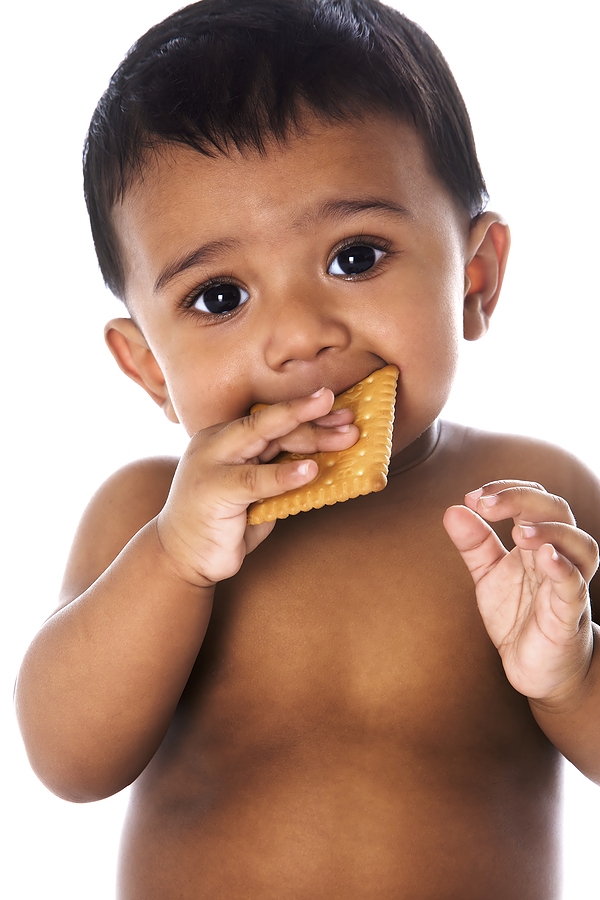
But it is very important for parents to be able to recognize these signs and upgrade the texture of their food appropriately.
How to move on to textured baby food if your baby is stuck on purees (for babies 6 to 8 months):Step 1. Mash it with a fork. Yes, it is as simple as this. Instead of using a blender, just smash the food until you have a coarse puree. See above a picture of a mango mashed with a fork vs mango blended in a puree.
Step 2. Give your baby some dissolvable or very soft finger foods. Examples are cereal puffs or pieces of very soft cooked vegetables, fruit and soft meats or fish. You can bring the food to your baby’s mouth for him to eat or (better!) let him practice his motor skills and try to pick them up.
Step 3. Give your baby bigger pieces of finger foods that he can hold himself, gnaw and take small bites from. Here is a list of finger foods that are both easy and nutritious.
Again, every baby is different and your baby may dislike the lumps but enjoy finger foods or the other way around. The best strategy is to keep exposing to a variety of textures as soon as your baby is eating purees with no problem.
Remember that the goal is to have your baby at a family table by eating foods of different textures as soon as he is ready for it.
If you would like to get the whole framework and all the steps to start your baby on solids using the mixed approach, check my Stress-Free Solids program – it’s completely online and has videos of babies eating both finger foods and purees (differed textures), videos of babies gagging, photos of safe finger foods from all the food groups, recipes and schedules. I also walk through all the texture transitions, so you know when exactly your baby is ready for the next upgrade and how exactly to help them develop their skills.
What may happen next?1. Baby will start eating less. It is not uncommon for babies to cut down on the amount of food temporarily as they are mastering a new texture. It is a very normal reaction. It also may take longer for them to eat the same amount of food.
It is not uncommon for babies to cut down on the amount of food temporarily as they are mastering a new texture. It is a very normal reaction. It also may take longer for them to eat the same amount of food.
But you do not need to worry about it because at this age a big part of calories and nutrition are still coming from formula or breast milk. So a temporary decrease in the intake of solids is not likely to impact your baby’s nutrition.
It is hard to let go of control over how much the baby eats but this will also prepare you for the toddler stage when appetite may reduce dramatically and desire for independence may grow tenfold.
2. Baby will gag. Gagging is a sign that babies are learning to handle a new texture. It is a safety reflex that helps them get rid of the food that is still too challenging.
If your baby gags but then happily continues eating and learning to manage the food, great. Just keep doing what you were doing, slowly upgrading the texture.
If your baby gags continuously, vomits frequently and is generally upset at mealtimes, it is best to consult a feeding specialist to rule out potential underlying issues. You can also check this online class with an occupational therapist.
3. It is messy. Of course, spoon-feeding is a relatively mess-free way to feed a baby. But it is important for your baby to learn how to eat independently. There is no way around it, unfortunately. An added bonus is that the mess your baby creates while learning to self-feed boosts his sensory development. So it is a win-win!
I invite you to consider a few weeks of a terrible mess as an investment in your baby’s long-term good eating habits and interest in food and eating.
How to move on to textured baby food if your baby is older than 8 monthsYou may need more support and a more detailed plan to help your baby. It will include steps to help your baby move the food in the mouth in a more mature pattern, improve his chewing skills and help move his gag reflex further down the tongue.
Because so many parents reach out to me every week I partnered with an occupational therapist Alisha Grogan to bring you a fully online class Table Food School that includes the step by step roadmap to help your child eat more textures.
Alisha has used the same plan in her individual therapy work with families so you will learn secrets that are rarely shared outside of the feeding therapy community:
- Knowing which foods to serve when
- How to set up your meals to be a time your child enjoys and is ready to explore in
- Learning and addressing your child’s challenges so they can eat solid, table, and finger foods well.
- How to help your child transition to more textured food and prevent future picky eating
You will learn about the best food schedules, the optimal food order and also how to use special tools to help your child tolerate and enjoy more textures and variety.
Learn more about the Table Food School online class here.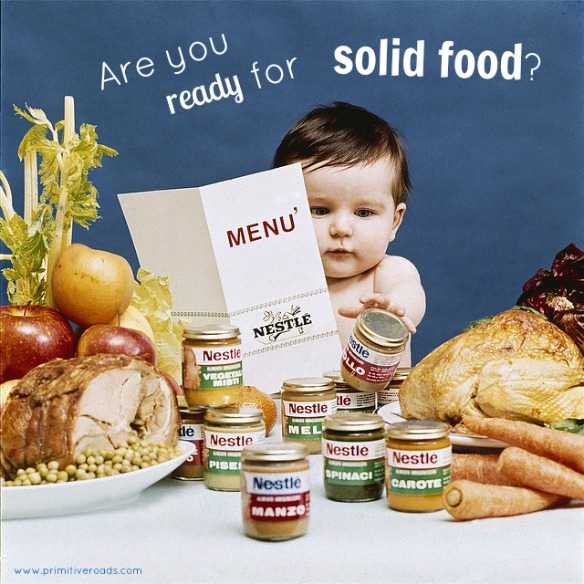
Your child psychologist If a child does not eat solid food...
Once a mother of two wonderful children (I will omit names at her request) contacted me with an alarming message that her youngest daughter at 3 years old refuses to eat solid food in pieces (afraid to swallow).
Since this problem is quite interesting, because it relates more to the psychology of the child's perception of this or that situation (provided that bodily health leaves no doubt), I agreed to our meeting.
A Skype consultation was held, during which all issues were worked out, including the girl's medical history, her psychological and physical development, as well as the system of relationships in her family.
Now I am happy to share with you the feedback of the girl's mother and her results. I think she will tell you better what she had to endure, seeing her daughter refuse to eat what she used to love. This is beyond the power of almost every loving and attentive parent.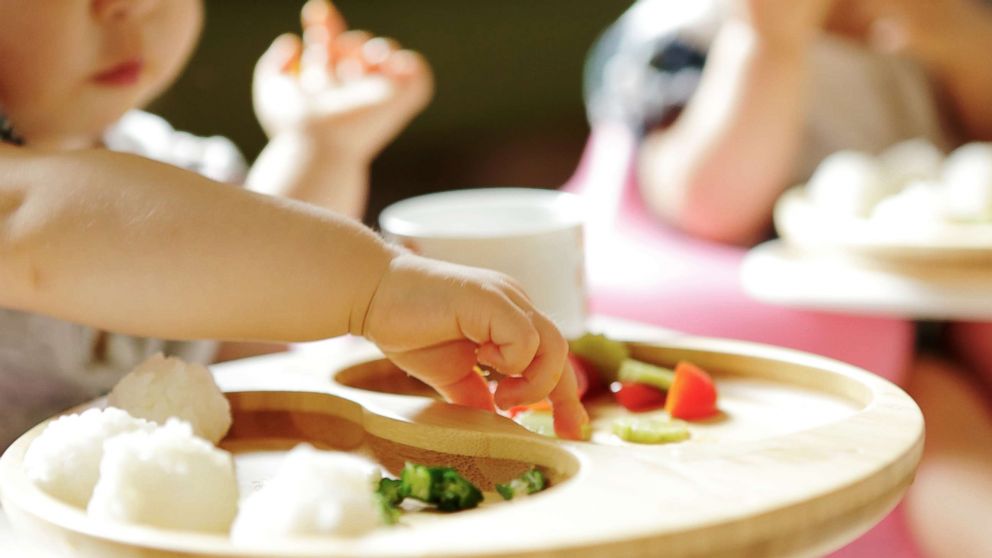 To her credit, her mother followed all the recommendations diligently, it was easy to work with her. And I thank her for her openness.
To her credit, her mother followed all the recommendations diligently, it was easy to work with her. And I thank her for her openness.
Hello, readers of the blog "Your Child Psychologist"!
I would like to express my deep gratitude to Tatyana for her invaluable help in my situation.
I am an ordinary mother of two children - a son (6 years old) and a daughter (3 years old). I will say right away that I was prepared for tantrums, but I was not at all ready for the fact that my child would not eat and fell into a stupor. My daughter refused to eat coarse food - she only drank (and only fruit kefir, drinking yoghurts, tea and juices). The reason, according to the striker 🙂 " Crumbs interfere and I'm afraid to swallow .
The pediatrician, who looked at my daughter 2 times, said that the child is completely healthy, just wait. But, like any mother who thinks that my child is not eating enough, having read all sorts of horror stories on the Internet, she could not leave this situation.
“Why didn’t you feed her mashed potatoes ?!”, you ask. Yes, because the daughter has not opened her mouth on mashed potatoes since she was 10 months old, when she learned to chew adult food, because if mashed potatoes were shoved into her, she spat them out. God forbid, any lump or crumb (even a clot of yogurt) will come across - the daughter immediately began to scrape everything out of her mouth, spit, even before the gag reflex.
My child is hungry, my child is not eating enough, my child will lose weight, my brains screamed! Therefore, I cooked oatmeal porridge, broccoli, carrots, rubbed through a sieve (God, I didn’t rub so much in infancy), bought ready-made mashed potatoes (because sweet) and green beans (at least some variety) and mixed it into fruit kefir, orange juice (it turns out that orange juice interrupts many flavors J), mixed with chocolate milk once a week. If only the daughter received at least some nutrients. And God forbid, if a grain comes across - the daughter spat, if you overdo the mashed potatoes - the daughter immediately felt that the taste was changing .
..
Since the child is healthy in body (according to the pediatrician), then it is necessary to show the soul, or rather, the brain, to a specialist, and not only my daughters, but also mine 🙂 .
I turned to Tatyana after more than two weeks of starvation of the child. And so, having sent a detailed letter about the situation, photographs of the child, her drawings, works, I had a consultation with Tatyana Egorova.
Omitting all the details of the conversation, I will say one thing that Tatyana skillfully dotted all the “I”, directed me in the right direction, pointed out my mistakes and indicated my further tactics. The hardest part of the striker's tactic was to turn off my brains, my MOTHER's brains. God, I did it!
As a result, the child stopped being afraid of crumbs, began to eat at first with caution, then it got better and better. Yes, at the moment, and it's been almost a month, my daughter eats something, but refuses something.
But every day, she tries again the already familiar products - today she will lick a melon, an apple, suck on cheese, tomorrow she will bite off an apple and spit, and the day after tomorrow she will fully crunch it on both cheeks! Hooray!!!
And now my daughter is already at the party "Valentine's Day Pizza & Craft Party" eats pizza and cakes on a par with other children, and does not look at everyone with eyes full of fear (and you yourself understand, I hope, when you really want to eat, when there is such a variety of food and beauty, and you are afraid, you are afraid that there are crumbs, you are afraid that you will not be able to swallow, you are afraid that you will choke).
Thank you, Tatyana! Thank you very much and regards! We did it :).
I will add a few more words on this situation and in general. It is important to keep track of what started this or that problematic behavior in time. And if there is something incomprehensible in the behavior of the child - there is always some reason for . And tracking it down was our joint task.
Further, what should be taken into account to all parents, (very often mothers and grandmothers lose sight of when their child refuses to eat ) - you can not shake over the child, whether he ate or not, scrupulously calculate the amount of calories, compare it with other more well-fed children, and to feed even when he does not want to, protests. We are now talking about healthy children. For patients, there are other recommendations + following the doctor's prescribed treatment, but even here the attitude of parents to this issue plays a significant role. Whether the mother will worry, panic that the child does not eat, this will be passed on to him, who will develop protective mechanisms, up to the selectivity of food and vomiting, or uncontrolled obesity. And this happens, alas .. Either the mother will change her attitude and help the child relieve stress in matters of food.
So take it seriously and… keep it simple.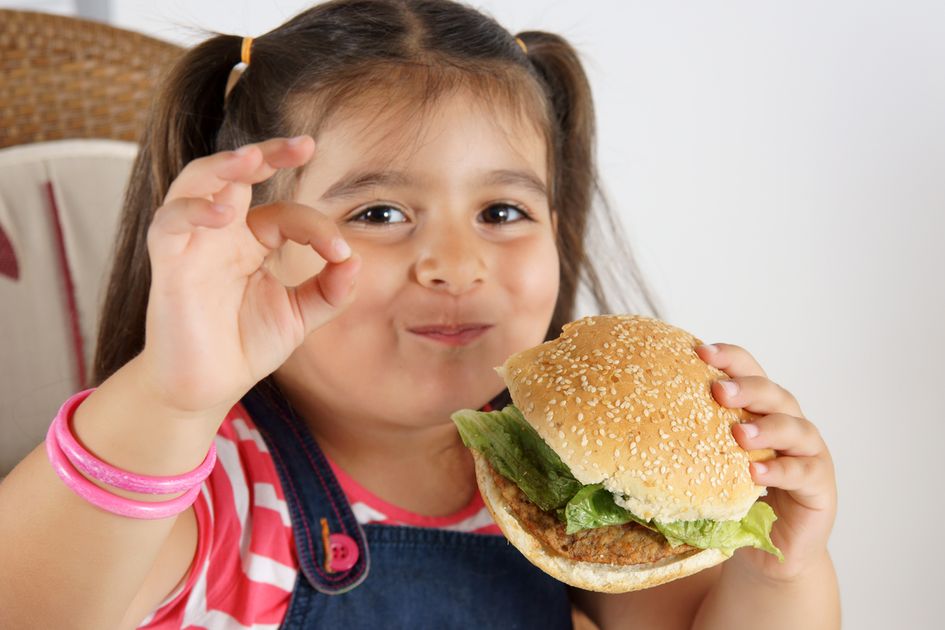 In nature, we will not find any of the animals or birds who would refuse to eat just like that out of stubbornness. And the reason can be either an elementary feeling of satiety (comments are superfluous), or stress (we find out its source), or a somatic disease (requires appropriate treatment), or an incorrectly formed eating behavior (analysis of the child's psychophysiology).
In nature, we will not find any of the animals or birds who would refuse to eat just like that out of stubbornness. And the reason can be either an elementary feeling of satiety (comments are superfluous), or stress (we find out its source), or a somatic disease (requires appropriate treatment), or an incorrectly formed eating behavior (analysis of the child's psychophysiology).
What does it mean, wrong eating behavior ? Briefly and simply: this is when the child does not feel the NEED for food: his digestive system is not yet ready, the brain does not start the program of hunger and food search. If a feeling of hunger has arisen, the child often tries to compensate for it by snacking. It would seem that this is a trifle, but it disrupts the entire biological mechanism for accepting and digesting food (flip through the textbook of the physiology of the digestive system). Therefore, it is important to eat at certain hours, with sufficient frequency (depending on age and amount of energy consumption) and not allow uncontrolled snacking. Other sweets in the form of sweets are classified as a dessert, which is allowed after the main meal. The attitude to food should be calm, without violence: if he doesn’t want to eat breakfast, it’s not a problem, he will eat at lunch or at lunch. Etc. Plus, we revise the menu, if necessary.
Other sweets in the form of sweets are classified as a dessert, which is allowed after the main meal. The attitude to food should be calm, without violence: if he doesn’t want to eat breakfast, it’s not a problem, he will eat at lunch or at lunch. Etc. Plus, we revise the menu, if necessary.
Another important thought: food should not be a means of consolation, punishment, manipulation of a child , etc. Food is a necessity for the body. Dessert is a pleasant end to a delicious breakfast or as an occasion to celebrate some joyful event that unites everyone at a common table or as an opportunity to please a child with a surprise without any conventions. Therefore, remarks like: “Well, eat porridge, otherwise we won’t go for a toy”; “Only obedient boys get candy”; “Nah, just don’t yell!” are meaningless, because they do not solve the very problem that caused this behavior.
Subscribe to the free picky eater newsletter, in addition to the method, in several lessons you will find additional recommendations for solving the problem with the child's appetite and behavior at the table:
Get the picky eater method and take the lessons for free!
Share in the comments, have you ever had problems feeding your children? And how did you solve them?
Puree again? What to do if the child eats only crushed food
Home
\
Ekaterina Maslova
\
Puree again? What to do if the child eats only crushed food
\
Ekaterina Maslova
Nutritionist
all expert articles
{{text}}
Puree again? What to do if the child eats only crushed food
A variety of mashed potatoes and pureed mother's soups are adored even by grown-up kids: the usual taste, a long-familiar texture that is so easy to swallow. Why waste time chewing when food can be so convenient? But mom likes it less and less: she’s fed up with grinding each serving with a blender, the pediatrician insists that it’s time to switch to solid food, and in general it’s not clear why the child refuses to eat in pieces? How to overcome the baby's fear of "adult" dishes and teach him to chew - in our article.
Are you in a hurry?
Experts from the UNICEF European Bureau say that by the age of two, a child can already chew the same food as adult family members. But the terms are rather arbitrary: someone can quite cope with the pieces by the age of one, while for other kids the development of the skill is delayed. Everything is very individual, so take a closer look at your baby, his skills and habits. Try to understand if he is ready for solid food, and if so, what prevents him from starting to chew? If you can't figure it out, seek help from a pediatrician, nutritionist, or pediatric nutritionist.
Say "ah-ah-ah-ah"!
Sometimes it can be painful for a baby to chew or swallow. Discomfort and pain cause wounds from stomatitis, swollen gums during teething, early caries. Monitor the condition of the oral cavity and teeth, and if you notice a problem, make an appointment with the dentist.
And it's hard for mom
Perhaps the mother does not know when the baby can start eating from the common table. Or she is just comfortable feeding him mashed potatoes from jars, because cooking takes a lot of time. It happens that switching to solid food is simply scary: friends had a negative experience or someone shared their failures on social networks. Sometimes, in order for a mother to decide to give food in pieces, a simple support from relatives, help during cooking and feeding is enough. You may need to consult a pediatrician or psychologist - they can help mom overcome doubts.
Not a race, but a marathon
Quickly accustom the child to the pieces will not work. He must mature for this, get used to new sensations. Equally important is the readiness of the body to chew solid food: the number of teeth, the development of chewing skills. Sometimes time is all a little foodie needs. Don't rush it!
He must mature for this, get used to new sensations. Equally important is the readiness of the body to chew solid food: the number of teeth, the development of chewing skills. Sometimes time is all a little foodie needs. Don't rush it!
You need to move smoothly to eating in pieces. To begin with, every few days, instead of mashed potatoes, offer your baby a finely chopped dish, crushed to grains. When the child gets used to it, leave a few small pieces in the serving, and then gradually increase their size and quantity.
Food not fun
Under TV or a fairy tale, a baby can even eat unloved food. But there is little benefit from it, and the skill of chewing solid food does not develop: the child mechanically swallows food. Do not distract him with video and audio while eating, do not form unhealthy habits.
Many children are not ready for the simultaneous change in both the taste and the consistency of the product. To reduce the likelihood of another “I won’t!”, You can (still calmly and regularly) offer the child to replace the familiar cottage cheese, for example Rastishka with strawberries for Rastishka with strawberries, banana and cookies.


